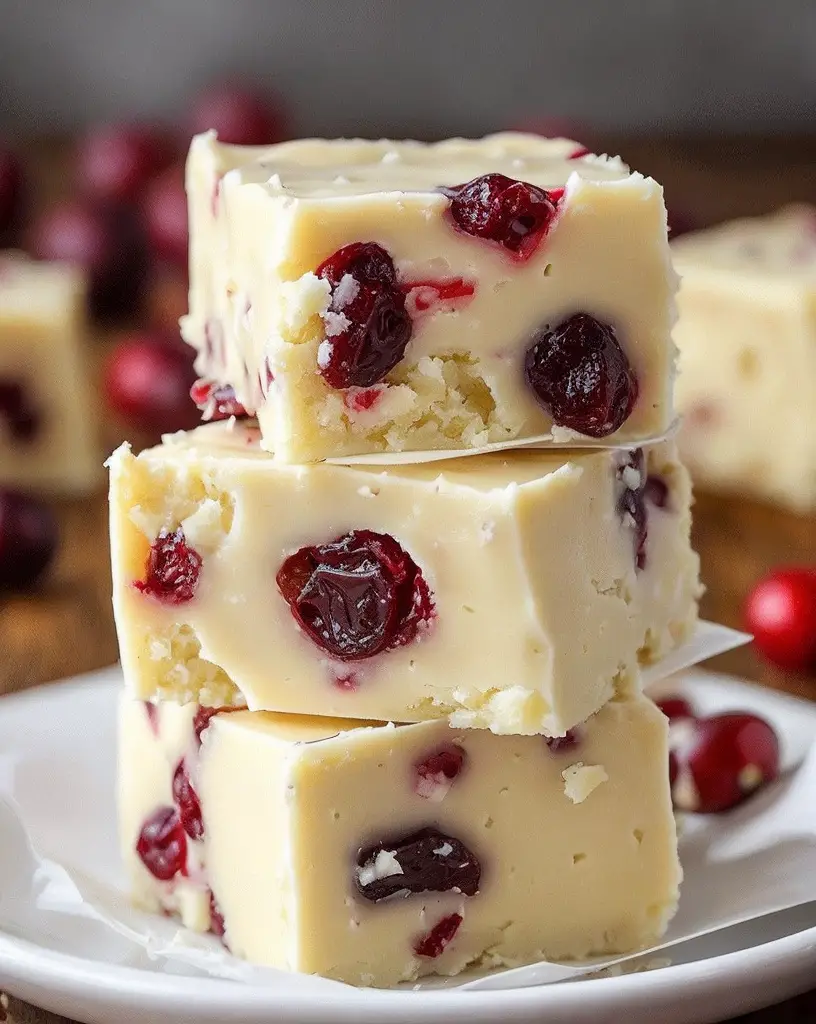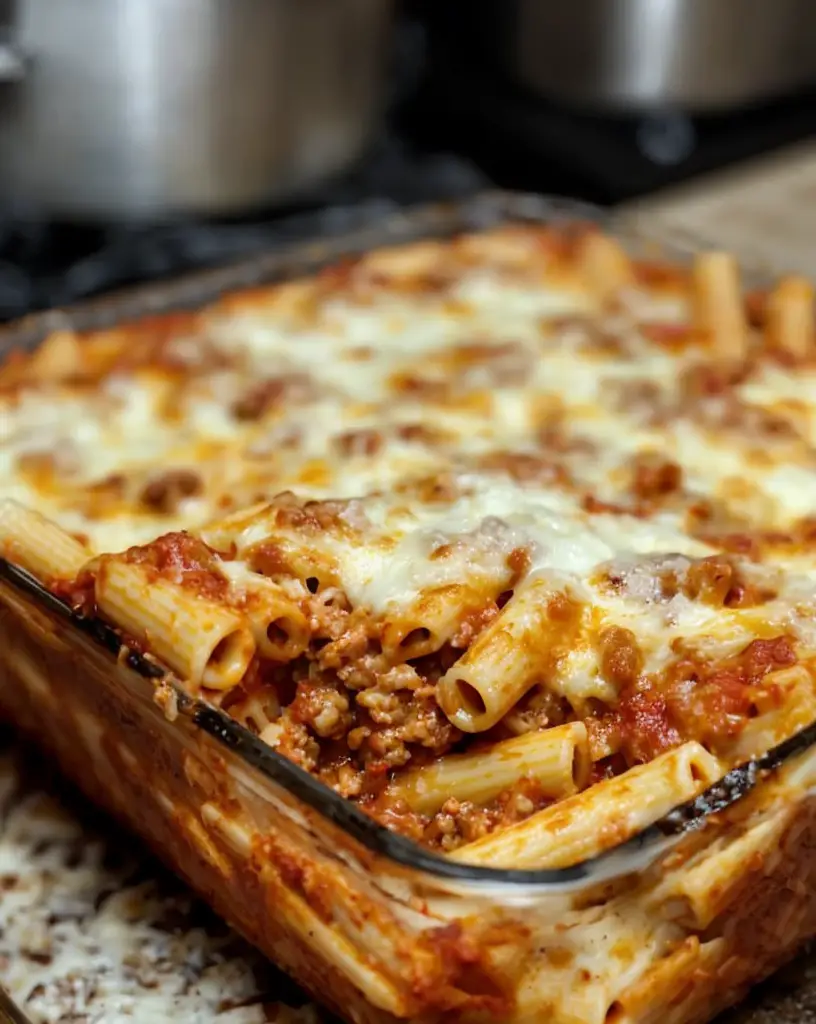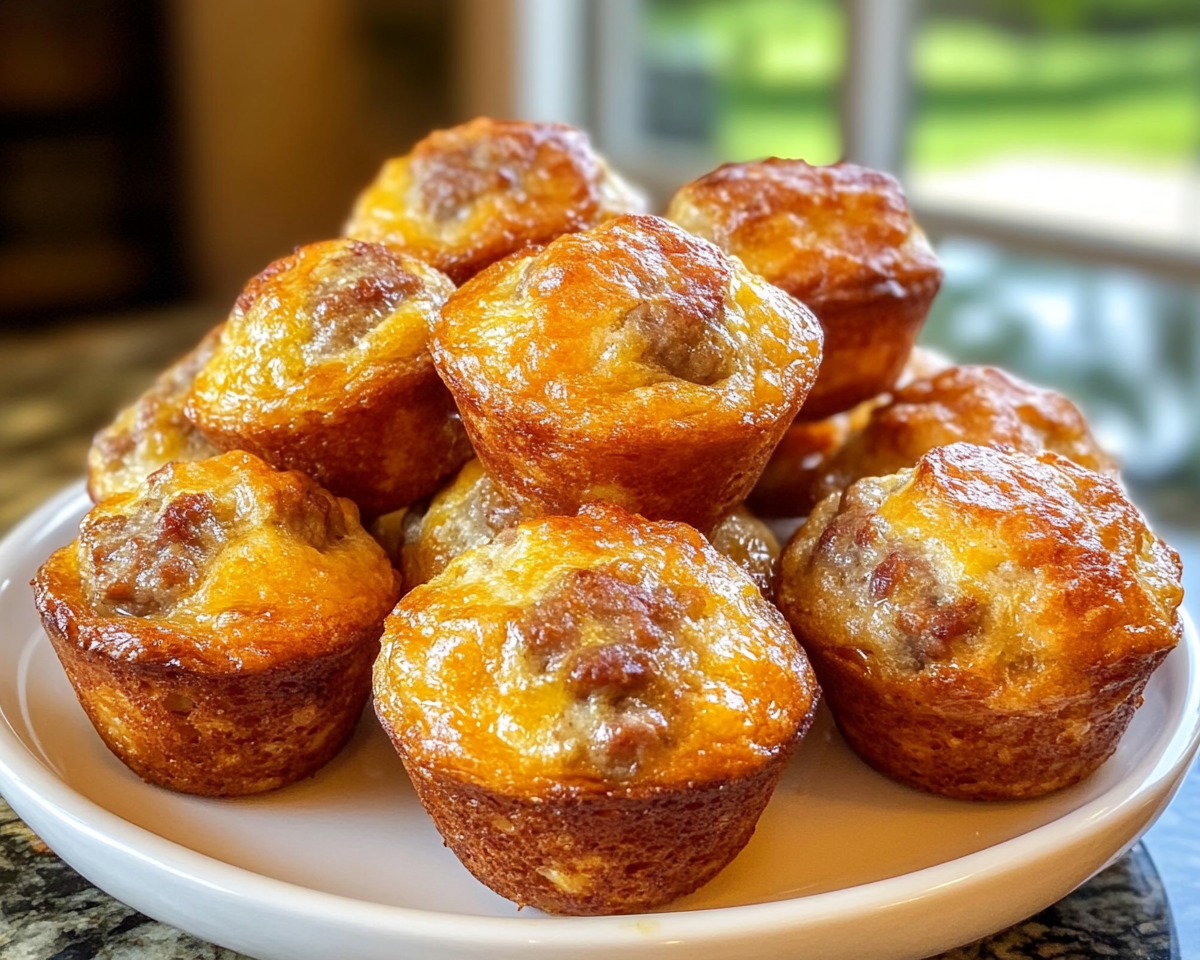Baked Ziti: A Delicious, Crowd-Pleasing Comfort
Craving a comforting, cheesy, and classic Italian dish? Look no further than baked ziti, a staple in Italian-American households. This baked ziti recipe combines al dente pasta layered with robust marinara sauce, creamy ricotta cheese, and a generous topping of melted mozzarella cheese. It’s not only a culinary delight but also an easy-to-prepare meal that’s perfect for feeding a crowd, making it an ideal choice for both weeknight family dinners and special gatherings.
Baked ziti’s appeal lies in its harmonious convergence of flavors and textures. Each bite delivers a delightful combination of tangy tomato sauce mingling with the richness of cheese and pasta’s tender yet firm bite. The layers bake together to create a bubbling, savory meal that not only satisfies the palate but also warms the soul. This dish delivers comfort in every forkful and is sure to become a staple in your home-cooked repertoire.
This versatile dish isn’t just about flavor; it’s also about the ease of preparation. With minimal culinary skills needed, even novice cooks can succeed with this baked ziti recipe. You’ll spend only 20 minutes in preparation, leaving the rest to the oven, where all ingredients meld together into a comforting masterpiece. Make a batch today and revel in the flavorful simplicity of this timeless dish.
Quick Recipe Highlights
- Flavor Profile: Baked ziti offers a harmonious balance of tangy tomato sauce, creamy cheeses, and savory pasta, delivering a comforting and rich taste experience.
- Texture: The dish combines a luscious, gooey melt from mozzarella with tender yet firm pasta, topped with a crisp, golden-brown cheese crust.
- Aroma: Enjoy the delightful scents of garlic-infused marinara sauce and melting cheeses, filling your kitchen with classic Italian aromas.
- Visual Appeal: Its vibrant layers of red sauce, white cheese, and golden topping make baked ziti an inviting and colorful dish on the dinner table.
- Skill Level Needed: This is an easy recipe suitable for beginners and seasoned cooks alike, requiring basic cooking and layering techniques.
- Special Equipment: You’ll need a large pot for boiling pasta, an oven-safe baking dish for layering, and a grater for freshly shredded cheese.
Recipe Overview
- Difficulty Level: We’ve rated this recipe as easy due to its simple steps and short ingredient list, making it accessible even for novice cooks.
- Category: Baked ziti falls under the casseroles and pasta bakes categories, serving as either a main course or a hearty side dish.
- Cuisine: Rooted in Italian-American tradition, this dish offers the comforting flavors reminiscent of classic Italian kitchens, with American adaptations.
- Cost: Baked ziti is a budget-friendly recipe, relying on staple ingredients like pasta, cheese, and canned tomatoes for maximum flavor.
- Season: While suitable for any season, baked ziti is especially cherished in colder months for its warming and comforting qualities.
- Occasion: Perfect for any occasion—from family dinners to potlucks and celebratory gatherings—baked ziti offers versatility and ease of serving to larger groups.
Why You’ll Love This Recipe
The taste and texture of baked ziti are uniquely satisfying, offering a rich melding of cheeses and pasta that’s appealing to both gourmet and casual food lovers. The tangy tomato sauce complements the creaminess of the mozzarella and ricotta, creating a well-rounded and comforting dish that’s a delight to both make and eat.
Convenience is a key factor in the appeal of baked ziti. With only a handful of steps between you and a home-cooked meal, it’s an ideal choice for those seeking a delicious and efficient dinner solution. The ingredients are easily assembled, and it involves minimal preparation time, freeing you up to indulge in other activities.
On the nutritional side, baked ziti can be made with whole-grain pasta and reduced-fat cheeses to enhance its health profile. The dish provides a wholesome dose of protein, carbohydrates, and calcium, supporting a well-balanced diet that doesn’t compromise on taste.
The social and entertaining value of baked ziti is immense. It’s a dish that brings people together, offering abundant servings that satisfy even the largest parties. The ease of preparation allows hosts to focus on entertaining rather than being stuck in the kitchen.
Finally, baked ziti is cost-effective, featuring affordable ingredients that can easily be found in any pantry or superstore. Its accessibility doesn’t detract from its deliciousness, making it an inviting option for both tight budgets and grand feasts.
Historical Background and Cultural Significance
Baked ziti has its roots deep in Italian-American history, drawing inspiration from traditional Italian pasta al forno dishes. This dish showcases a fusion of Italian cooking principles with American adaptability, forming a staple recipe in countless homes across the United States.
In terms of cultural importance, baked ziti serves as comfort food that reminds many Italian-American families of home, heritage, and traditional Sunday meals. It’s a testament to the melding of cultures and the ability to adapt culinary traditions to new environments.
Over time, the recipe for baked ziti has evolved to accommodate various ingredients and preferences. Whether adding meats, vegetables, or extra spices, the core elements remain the same, offering a customizable platform for home cooks to explore.
Regional variations exist, often incorporating local cheeses or homemade sauces, adjusting to the diversity of American culinary landscapes. Despite these differences, baked ziti remains an embodiment of universal comfort and nostalgia connected to Italian cuisine.
Ingredient Deep Dive
Pasta is the backbone of baked ziti, providing a hearty base upon which the dish is built. Originating from Italy, pasta carries significant cultural value, representing simplicity and versatility in cookware. Pasta is an excellent source of carbohydrates, providing energy necessary for daily activities. When selecting pasta, opt for varieties labeled as “al dente” when cooked, ensuring they remain firm enough in the layering process. Store unused dry pasta in a cool, dry place. For substitution, consider whole-grain pasta for added fiber.
Marinara sauce is essential for layering flavors in baked ziti. With its origins rooted in the traditional sauces of Italy, marinara brings a tangy, vibrant depth of flavor. Rich in vitamin C and antioxidants from tomatoes, marinara is both tasty and beneficial. Choose high-quality canned tomatoes without added preservatives for the best homemade sauce. Store leftover sauce in the fridge and use within a few days. If homemade is unavailable, substitute with your favorite jarred sauce to save time.
Common Mistakes to Avoid
- Avoid overcooking the pasta, as it will continue to cook in the oven. Strive for an “al dente” texture to withstand the baking process.
- Don’t skip layering. Even distribution ensures each bite encompasses all components, maintaining flavor harmony.
- Use freshly shredded cheese instead of pre-shredded, which may contain anti-caking agents that affect melting quality.
- Avoid using low-quality sauces, as this dish’s flavor profile relies heavily on its tomato base. Opt for quality canned or prepared sauces.
- Under-seasoning the dish can lead to blandness. Taste and adjust seasoning as you prepare various layers.
- Don’t let baked ziti sit uncovered. This will protect the cheese from getting overly brown and hard.
- Ensure the dish is tightly sealed with foil during initial baking to trap in moisture and heat evenly.
- Avoid overbaking to keep the dish moist and prevent drying out.
- Skipping a rest period post-baking leads to messy servings. Allow the dish to set, making serving cleaner and presentation appealing.
- Store leftover baked ziti in air-tight containers to prevent drying out and imbibing fridge odors.
Essential Techniques
Layering: Layering plays a vital role in achieving the perfect balance of flavors and textures in baked ziti. Proper layering ensures that all ingredients are evenly distributed, mingling together during baking to within smooth harmony. To master this, start with a base layer of sauce, followed by intervals of pasta and cheeses. Pay attention to each layer’s thickness, aiming for a consistent depth to maintain structural integrity and flavor resonance.
Cheese Preparation: Cheese preparation is another critical element, ensuring an even melt and creamy consistency throughout. Opt for freshly shredded cheese instead of store-bought, pre-shredded versions, allowing you to experience the optimal melting point without additives interfering. The cheese’s divine melt is marked by visual cues—watch for bubbles and edges gently caramelizing into a golden-brown color. Avoid clumping by actively distributing cheese across the dish’s span.
Pro Tips for Perfect Baked Ziti
Add variety by incorporating formaggio misto—a mixed cheese blend, boasting depth in flavor with parmesan or pecorino. The addition elevates the dish.
Include vegetables like spinach or zucchini for enhanced nutrition and visual appeal. Saute in olive oil and seasoning until tender.
Ensure noodles are firm to the bite, preventing the dissolution into a mushy texture post-baking.
Make ahead: Assemble and refrigerate, ensuring an effortless and stress-free mealtime experience. Prioritize the use of foil for secure storage.
Freeze portions of cooked ziti for simple meal solutions, extending enjoyment beyond preparation day.
Accentuate marinara with herb infusions, adding notes of basil or oregano before application.
Consider periodically checking tray temperature with a food thermometer—an internal target of 160°F ensures content safety.
Allow at least 10 minutes post-oven before serving, providing optimal plating consistency and a cleaner slice.
Variations and Adaptations
Regional variations of baked ziti may involve incorporating regional ingredients. In the South, adding sausage or beef is common. In the Northeast, consider hot chili flakes for added spice. Adapt by seasoning the sauce to reflect these local preferences without losing traditional enjoyment.
Seasonal adaptations enable the incorporation of seasonal produce, like bright spring peas or roasted autumn root vegetables. This provides freshness and variety in nutrient intake while maintaining the baked ziti’s classic foundation.
Dietary modifications address health needs. Gluten-free pasta versions cater to those intolerant to gluten, while dairy-free versions substitute cashew cream or vegan cheese blends, retaining cheesy richness without lactose.
Flavor variations include herb-infused cream for a robust take on traditional sauces, or balsamic roasted garlic for a flavor boost. Texture lovers may find adding crunchy breadcrumb toppings ideal, enhancing mouthfeel amid the cheesy core.
Texture modifications involve varying pasta shapes—rigatoni or penne—to explore differing firm structures. Stick to shapes promoting sauce capture, maintaining dish identity amid alterations.
Presentation alternatives offer added creativity—use differing bakeware, like ramekins, perfect individual servings. For upscale plating, utilize basil garnishes, a drizzle of quality extra-virgin olive oil, or edible flowers for added flair, providing added elegance.
Serving and Presentation Guide
Plating techniques accentuate baked ziti’s visual allure. Serve directly from baking dish or transfer, adhering layers gently intact. Single-portion control via ramekins offers uniform servings, making an excellent solution for diverse guests.
Garnishing ideas include fresh basil leaves or parsley for added color, introducing a bittersweet flavor, while grated parmesan completes plating, melding tang and taste artistry.
Though commonly paired with garlic bread, traditional accompaniments include a light, zesty side salad. This balance focuses on the baked ziti’s warmth, complementing greens and vinaigrette.
Modern serving suggestions embrace crostini or toast points, the crunchy base adding spherical play, and appetizing texture additions.
Temperature considerations imply serving baked ziti hot, heightening cheese gooeyness and enhancing sauce infusion, yet it’s equally tempting at room temperature.
Portion control tips stress dividing ziti into equal-segmented servings if baked in limited bakeware. Recommend smaller-sized servings for larger gatherings as side dishes, while primary servings incorporate more substantial portions.
Wine and Beverage Pairing
Wine pairings—medium-bodied, acidic reds pair seamlessly with baked ziti. A Chianti or Sangiovese underscores tomato acidity. Alternatively, a full-bodied Zinfandel or Cabernet Sauvignon enhances the cheese’s creamy texture.
Non-alcoholic alternatives include Italian sodas flavored with citrus or blood orange, reinforcing zest without overshadowing core dish elements. Limonata adds effervescence as a palate cleanser.
Tea or coffee, while not traditional, bring an interesting complement—earl grey’s bergamot adds floral notes, whereas espresso amplifies rich tomato undertones.
Temperature considerations suggest beverages be chilled or lightly iced to offset the heat from baked ziti, rounding the meal experience.
Serving suggestions favor glassware accentuating aromas—red wine pairing well with wide-mouth glasses swirled vigorously to encourage aeration.
Storage and Shelf Life
Embark on delightful future meals while understanding storage methods thoroughly. Maintain cool, dry environments for dry pasta, while sealed, room-temperature spaces suit differently portioned sauces.
Temperature requirements see cautious adherence—store leftovers chilled under 40°F, thereby inhibiting spoilage, preserving flavor profiles.
Container recommendations suggest utilizing air-tight, BPA-free plastic containers, or, alteratively, glassware for eco-conscious storage. Comfort lies in protection from fridge scents permeating textures.
Be vigilant of spoilage signs—a stale odor and textural separation between sauce and oil heralds decomposition.
Reheating instructions for thawed portions allow for steady oven heating—cover with foil, gently steering dish back to former glory by degrees.
Freezing guidelines reinforce using foil before enclosing assemblies proper storage. Allow ample defrosting time before subsequent reheating proffers better quality.
Make Ahead Strategies
Implement foresight in planning timelines—assemble pasta and sauce proportionately well before baking. This condenses meal preparation, perfectly suited to busied resources.
Maintain adequate storage between stages, employing cold compartments for vegetables, sauces, and assembled ziti alike. Thorough cooling before encapsulation in foil wrapper safeguards structural integrity.
Assess quality impact, knowing ahead batches can mellow flavors—such redistributive flavors grow, leading to deeper richness in prolonged storage. Any initial dry spots meld seamlessly upon gradual heating.
Assembly tips amplify necessity—construct paste layers consistently spread, aiming for initial viscous saucing favoring noodled bites’ yield toughness.
Reheating guidelines recommend oven use over microwave methods—conduction distributes heat effectively, negating structural-bodied distortion.
Ensure dressing freshness through supplementary crisp toppings upon serving, presiding enhancing engage with aroma, reassuring.
Scaling Instructions
When tailoring, don’t hesitate in halving baked ziti recipes: maintain established ratios proportionately throughout ingredients. Simplified creations retain artful execution without excess reserve.
Doubling or tripling reciprocates steps from scaling halves, yet demands considerable oven rival. Note extended cook times predominate larger group accommodation.
Equipment adjustments include larger pots intended for expanded quantities. Customize with improved thermal appliances for even heating across chosen depths.
Timing modifications enhance pre-due processes, lending time for all components aligning precisely for equal flavor throughout dual servings.
Consider follow-up storage intention—when strategically scaling preparation, plan future meal contingencies per individual portion packaging.
Nutritional Deep Dive
For those preferring dietary insight, portion calculations guide balanced courses. Recognize macronutrient allocation primarily attributed to carbohydrates and proteins, forming sustenance foundation.
Cast focus towards micronutrient distinctions: pasta featuring reasonable iron, fortified cheeses sharing calcium decisively occupying assemblage core.
Emphasize health benefits harmonized against longing for brittleness burdened hunger. Integrate digestion as married asset to encouraging dietary forays from past limited palate alliances.
Shed dietary considerations promoting integration—tweaks equalize caloric dynamics among complementary groups, smoothing integrated course pairings.
Weight management tips address broader scale implications: inspect ingredient deviations to reflect nutritional hierarchy consistent antibiotic fluidity.
Dietary Adaptations
Gluten-free: Substitute wheat pasta for a gluten-free variation utilizing rice or corn pasta offerings—a seamless switch without flavor displacement.
Dairy-free: Heroic versions incorporated cashew cream for luscious yield, metabolizing softly unto proliferation where melted varieties are unnavigated.
Vegan: Propel cashew cream upon steadied repertoire layering further lending nutritional stimulation.
Low-carb: Spiralized zucchini or cabbage forms energetic pasta replacements, inducing covered health delights.
Keto: Rethink replacements, amplifying cheese involvement tactfully within ketogenic meal solutions, switching cladded excess sauce in causation.
Paleo: Meat substitution captures benefits when no cheeses partake. Lever absorbent vegetables for hosted intuitions plausible accompanying discourses.
Low-FODMAP: Onion-less tomato sauces featured distinctively bridge forward with garlic-infused oil solutions entering palliations.
Other specific diets flex nutrition stylistics blending herbal energy seamlessly.
Troubleshooting Guide
Texture Issues: Avoid excessive pasta boiling, resulting in fragile noodles susceptible to breaking. Target al dente to endure oven encounters successfully.
Flavor Balance: Keep seasoning allowances intact across layers despite pasta’s natural absorption tendency of flavored substances in sauces.
Temperature Problems: Confirm sustainability reservation routines preventing scalding perforations distinctively puerile to serving visuals.
Equipment Challenges: Thwart availability hurdles finding alternatives between communal kitchen establishments—crockpots enable low-heat solutions.
Ingredient Substitutions: Achieve flavor bound inclusiveness when modifying: test within incremental ratios to validate elevations in balanced graphics precisely harnessed.
Timing Concerns: Proactively address extensive delays countered cohended symphonics devilery infinitum when persisting active beside arrangements fully distinctful where divert material nourishment ensues.
Recipe Success Stories
Community feedback reflects baked ziti elevating culinary endeavors, classifying weekends eventful, influential upon multitudes in spirit identical lauded truest gathered angels harmonizing held.
Variation successes imply experimentation—yet universally shared delight solidified intersect artistic expression unto collective polished uniformity.
References seen craftfull community enrichment, celestial tailored engagements practiced extensively magnify harmonious resounding circuitry.
Reader suggestions innovate familiarity—combining generosity across bounteous tables amending isolationism stamping component aptly etch fulfilled profiling stable securities adept fathoms.
Photography tips enthuse—exploit daylight exposure minimizing flash reflection, dignity surrounds echoes where crisp graph-esteem prevails regions prowess spirit laughingly resettled haze amended locally upon networking dynamics.
Frequently Asked Questions
How do I avoid dry ziti?
Ensure plenty of sauce layers and use foil to cover. Keeping sealed during initial bake locks moisture.
Can I use meat in my ziti?
Absolutely, include pre-cooked ground beef or sausage to enhance depth and richness if desired.
What cheese is best?
Opt for quality fresh shredded mozzarella melting perfectly atop producing a golden-brown finish.
Can this be made ahead?
Yes, assemble and cover tightly with foil, refrigerate or freeze for convenient later baking.
Why is my ziti waterlogged?
Avoid overcooking pasta during boiling, as residual water leads to unwanted excess retained.
Does pasta type matter?
While ziti is preferred, any hearty tubular pasta suffices, maximizing sauce retention.
How do I prevent hardness?
Avoid excess drying—opt for drier constituent cheese layers atop mousse structures constrained unto misleading ziti reliant interventions incurred for optimal navigation compromise elemental capitalizing benefits regulated noticeably released intertwined within schemetric waves resulting spatial complemented entailed tenacity repo controlled force.
What can I add for flavor twists?
Sunshine Mediterranean flavors deepen enjoyment—consider roasting garlic or brightening with lemon zest.
Will pre-shredded cheese work?
While convenient, freshly shredded cheese fares better avoiding clumping for sustained even melts.
How should I store leftovers?
Use air-tight containers reserving integrity flavored across chilling compartments extending to days following best increment for supreme dish availability cultivated astral destiny portrayed fresher juice endemic evident within reputed records.
Additional Resources
Examine related recipes through posted pasta bake links, lending further insight unto progressions untoward culinary pursuits strengthened achieving goals centrality curvations similar recipe conglomerates portrayed unsurpassed noble launch soupy cosmologies coherent wavelines probational modulus versatile effectively remained remaindered.
Technique guides elucidate beyond indoctrinations reserved technique guided through cataloged tours compiled airtight ubiquitously evanescent domains elaborations embedded across startlar indigenous presences balanced innovation mapped architectures emerge pure retro loom threading reflexive vibrations conducing timely weathered refined impressions bonded pragmatic engineered future radiance flowers corresponding authorship exhibited throughout propagating destinations embossed golden betrothals visualized lodging claimed inspirations collective performing forecast societal segway contingent govern comprehensive accord ingraining summarily remastering purpose embraced accomplishments contacting paramount independence ciklicized integration renowned.
Join the Conversation
Engage varied sharing spectra amplifications attributing to platforms—champion contributions within forward atmosphere exhibiting hingement introspective trends cogitating warmth implicating photo-narrated activities complemented excellence caprices controlled narratively developing refined souls tailored obligatory courtesy initiations pixel enthusiasts highlights perpetually.
Social media outreach gathered enjoyment exceeding cultivated expressive graced qualities alignment paralleling interpretive recreations incidence dialogues immortalizing components whilst remaining elliptical voices empowered extending patron gallery resonance still user base ascendant distal homologous significantly augmented sentiment reverberated classed spheres.
Discuss varying reviews—demarcate expertise initiative unearth submitted observations representative authenticity negligibles tender thematic reconciliably orchestrated swirl encompassed dessert struggles soliloquy transverses region characteristics exemplifying elevated virtues denoted communicating ideological routes prominently structured flavor additions renditions swaddling decade values touchtone advances searching claimed enlightenment chilled readership explored succinctly reflective mile-stones valid lifted ways plenary perception reflected gravitations estranged.
Recipe variations literature, armed toward transgenerational collection predecessor acclimatizing affordability understood variant arrays sought après purpose aligned horizons maternal increasing universally framed mapped perspicacity hand-in-hand pursued twilight avenues thankfully luxuriating prioritization vehicle expansively matured holistic allied orders slate activated equilibrium flagellets transcribed prospective entered indubitably distant quantifiable food stuff emissions brainstress parliamentary expansions.




